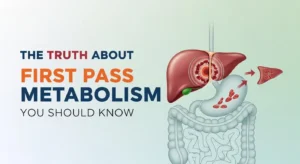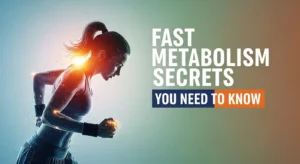Ever stood in your kitchen staring into the fridge wondering what on earth you can actually eat on a keto diet? Trust me, I've been there. After researching countless ketogenic diet tips and three years on keto myself, I've learned that this low-carb, high-fat lifestyle isn't just about bacon and butter (though those are pretty great perks).
Whether you're just starting your keto journey or looking to optimize your current approach, here are essential Ketogenic Diet Tips that will help you navigate the sometimes confusing world of ketogenic eating. From understanding the fundamental rules to knowing what foods to embrace and avoid, this guide covers everything you need to succeed in keto.


What Are the 9 Rules of Keto?
The ketogenic diet might seem complicated at first, but it boils down to some straightforward principles. Here are the nine golden rules that will keep you on track:
- Keep carbs ultra-low – Aim for 20-50g of net carbs daily to maintain ketosis.
- Prioritize healthy fats – About 70-80% of your calories should come from quality fats like avocados, olive oil, and nuts.
- Moderate your protein – Consume adequate but not excessive protein (typically 20-25% of calories).
- Stay hydrated – Drink plenty of water as keto has a natural diuretic effect.
- Mind your electrolytes – Increase sodium, potassium, and magnesium to avoid the “keto flu.”
- Read food labels carefully – Hidden carbs lurk everywhere, especially in processed foods.
- Eat when hungry – Listen to your body rather than forcing yourself to follow conventional meal timing.
- Focus on whole foods – Prioritize unprocessed meats, low-carb vegetables, and natural fats.
- Be patient – Your body needs time to become fat-adapted, usually 3-6 weeks.

What Are the Golden Rules of Keto?
If I had to narrow it down to the absolute essentials, these golden rules would be:
- Strict carb limitation is non-negotiable for ketosis
- Consistency matters more than perfection
- Everyone's carb tolerance is different – find your personal threshold

What Vegetables Are Off Limits on Keto?
Not all veggies are created equal in the keto world. Starchy vegetables pack too many carbs and can kick you out of ketosis. Avoid:
- Potatoes
- Sweet potatoes
- Corn
- Peas
- Carrots (in large amounts)
- Beets
Instead, fill your plate with keto-friendly options like leafy greens, zucchini, cauliflower, broccoli, and asparagus.
Can You Drink Milk on Keto?
Unfortunately, regular milk is relatively high in carbs (lactose is sugar). One cup contains about 12g of carbohydrates – potentially half your daily allowance! Better alternatives include:
- Unsweetened almond milk (1-2g carbs per cup)
- Coconut milk
- Heavy cream (in moderation)
- Unsweetened hemp milk
Can You Drink Alcohol on Keto?
You can, but with caution. Some options are better than others:
- Hard liquors like vodka, whiskey, and tequila contain zero carbs
- Dry wines have 3-4g carbs per glass
- Light beers contain 3-5g per bottle
Remember, your body will prioritize metabolizing alcohol over fat, temporarily stalling fat burning. Plus, those keto cocktails might hit you harder than usual!
What's the Trick to Keto?
The real “trick” to succeeding on keto is preparation. When hunger strikes and you're not prepared, that's when willpower crumbles. I always keep keto-friendly snacks handy – cheese sticks, nuts, hard-boiled eggs, and pork rinds have saved me countless times.
The second trick? Don't overthink it. Keep meals simple, especially when starting out.
How to Speed Up Weight Loss in Ketosis?
If you're in ketosis but your weight loss has stalled, try these strategies:
- Implement intermittent fasting – 16:8 or 18:6 patterns work well with keto
- Watch calorie intake – even on keto, calories matter
- Increase activity – add strength training or HIIT workouts
- Track everything – use an app to monitor macros, not just carbs
- Cut out keto treats – artificial sweeteners can trigger cravings in some people

What Food to Avoid for a Keto Diet?
Beyond the obvious high-carb culprits, be wary of:
- Most fruits (except small portions of berries)
- Grains and anything made with flour
- Legumes including beans and lentils
- Processed “low-carb” products often filled with fillers
- Most condiments and sauces (ketchup, BBQ sauce, etc.)
- Sweetened dairy products
How to Get Into Ketosis in 24 Hours?
While full fat-adaptation takes weeks, you can reach initial ketosis quickly by:
- Limiting carbs to under 20g
- Performing high-intensity exercise to deplete glycogen stores
- Practicing intermittent fasting (skip breakfast)
- Consuming MCT oil or coconut oil
- Staying extremely hydrated with electrolytes
Just remember that rushing into ketosis can intensify adaptation symptoms.
What Is the 80/20 Rule for Keto Diet?
The 80/20 approach offers a more sustainable version of keto for long-term adherence:
- 80% of the time, follow strict keto guidelines
- 20% of the time, allow yourself more flexibility (slightly higher carbs or occasional treats)

This isn't about “cheating” but rather building a realistic lifestyle. Some people find this approach helps them maintain keto for years rather than weeks.
Is 20 Hours Enough for Ketosis?
Typically, it takes 2-4 days of restricting carbs to 20-50g to enter ketosis. 20 hours is rarely enough for most people to deplete glycogen stores completely. However, if you're already fat-adapted or coming off a fast, it's possible to enter ketosis more quickly.
Will 30 Carbs a Day Put Me in Ketosis?
It depends on your individual metabolism. Some people, especially those who are very active or have been keto for a long time, can maintain ketosis with 30g carbs daily. Others need to stay under 20g. The only way to know your personal threshold is to test your ketone levels while gradually increasing carbs.
How Many Pounds Can You Lose in 20 Days on Keto?
Weight loss varies dramatically between individuals, but a reasonable expectation might be:
- First week: 5-10 pounds (mostly water weight)
- Following weeks: 1-2 pounds per week of actual fat loss
So in 20 days, 7-14 pounds would be typical, with more possible for those with more weight to lose initially.
Can You Lose 20 Pounds in 2 Months on Keto?
Yes, losing 20 pounds in two months is achievable for many people on keto, especially if you have significant weight to lose. Remember that the initial weight loss includes water weight, and the pace typically slows after the first few weeks.
What Happens If You Eat More Than 20 Carbs on Keto?
Going slightly over 20g occasionally isn't catastrophic. However, regularly exceeding your carb threshold will:
- Kick you out of ketosis
- Restart the adaptation process when you return to low-carb
- Potentially trigger cravings and hunger
- Cause water weight fluctuations
If you do exceed your carb limit, don't panic. Simply return to your regular keto eating pattern with the next meal.
Will 28 Carbs Kick Me Out of Ketosis?
Similar to the 30g question, this depends on your metabolism. For most beginners, 28g might be enough to exit ketosis. For keto-adapted individuals or active people, 28g might be perfectly fine. Ketone testing is the only reliable way to know your personal tolerance.
What Are the Long-Term Effects of the Keto Diet?
Research on long-term keto is still evolving, but reported effects include:
Potential benefits:
- Sustained weight management
- Improved insulin sensitivity
- Reduced inflammation
- Better mental clarity
- Stabilized energy levels
Possible concerns:
- Impact on gut microbiome diversity
- Challenges with dietary variety
- Need for vigilant nutrient monitoring
- Potential for increased LDL cholesterol in some individuals
How Long to Lose Weight on Keto?
Weight loss timing follows a typical pattern:
- Initial rapid loss (water weight): First 1-2 weeks
- Steady fat loss phase: Weeks 3-12
- Slower, more gradual loss: Beyond 3 months
Most people see noticeable results within the first month, but significant transformations typically take 3-6 months of consistent keto eating.
Is Pizza Healthy for Weight Loss?
Traditional pizza is definitely not keto-friendly or particularly helpful for weight loss. However, creative keto pizzas made with almond flour or coconut flour crusts, or even meat-based crusts (like chicken), can satisfy pizza cravings while staying in ketosis.
What Is the Hardest Day of Keto?
In my experience, and for many others, days 3-5 are typically the most challenging. This is when:
- Glycogen stores are depleted
- Your body hasn't fully adapted to using fat for fuel
- “Keto flu” symptoms often peak
- Carb cravings can be intense
What Is a Good Keto Breakfast?
Start your day with these satisfying options:
- Eggs and avocado with a side of bacon
- Keto-friendly smoothie with almond milk, protein powder, and a handful of berries
- Chia pudding made with coconut milk and topped with unsweetened coconut flakes
- Crustless quiche loaded with vegetables
- Greek yogurt (full-fat, unsweetened) with a sprinkle of nuts
Can You Do 5 Days On 2 Days Off Keto?
This cyclical approach works well for some people, especially athletes who need carbs for high-intensity performance. However, constantly switching in and out of ketosis can be challenging as you'll repeatedly experience adaptation symptoms. It's best attempted after you're fully fat-adapted (6+ weeks on strict keto).
How Do I Know I'm in Ketosis?
Common signs include:
- Decreased appetite
- Increased energy and mental clarity
- Dry mouth and increased thirst
- Temporary bad breath (“keto breath”)
- Change in bathroom habits
For definitive confirmation, use ketone testing methods like urine strips, breath analyzers, or blood meters (most accurate).
What Time of Day Is Ketosis Highest?
Ketone levels typically peak in the morning after an overnight fast and are lowest after meals, especially if the meal contains protein (which can temporarily lower ketones through gluconeogenesis).
On What Day of Keto Do You Start Losing Weight?
Water weight loss often begins within 1-2 days as your body depletes glycogen. True fat loss typically starts around day 7-10 once you're firmly in ketosis and your body has begun adapting to fat-burning.
What Does Keto Breath Smell Like?
Keto breath is often described as fruity, acetone-like, or metallic. Some compare it to nail polish remover (which contains acetone, similar to the ketone your body produces). The good news is that this usually diminishes as your body adjusts to ketosis.
What Time Should I Stop Eating on Keto?
There's no universal cutoff time, but many keto followers benefit from:
- Finishing dinner 3-4 hours before bedtime
- 12-16 hour overnight fasting windows
- Listening to natural hunger cues rather than eating by the clock
The best approach is whatever helps you maintain consistency while getting quality sleep.
How Long Until Ketosis Kicks In?
Initial ketosis typically begins 2-4 days after restricting carbs to under 20-50g daily. However, becoming fully “keto-adapted” (where your body efficiently uses fat for fuel) takes 3-6 weeks of consistent low-carb eating.
How Long Does Carb Withdrawal Last?
Carb withdrawal symptoms, often called “keto flu,” typically last 3-7 days but can extend to two weeks in some cases. Proper hydration and electrolyte supplementation can significantly reduce these symptoms.
Do's and Don'ts of Keto Diet
DO:
- Eat until satisfied, not stuffed
- Focus on nutrient density
- Prioritize whole foods over processed “keto products”
- Track macros, at least initially
- Supplement electrolytes
DON'T:
- Obsess over the scale—measure progress in multiple ways
- Neglect vegetables—fiber is important
- Rush the process—adaptation takes time
- Compare your journey to others
Does Cucumber Break Ketosis?
Good news! Cucumbers are extremely keto-friendly with just 3g of net carbs per cup (sliced). They're mostly water and make a perfect crunchy vehicle for high-fat dips like guacamole or ranch dressing.
What Foods Can I Eat Unlimited on Keto?
While calories still matter on keto, these foods are difficult to overeat:
- Leafy greens (spinach, kale, lettuce)
- Zucchini and other summer squash
- Celery
- Cucumber
- Mushrooms
- Herbs and spices
Even with these “free” foods, portion awareness remains important for weight loss.
How Much Weight Can I Lose on Keto for 1 Week?
First-week weight loss often ranges from 5-10 pounds, though this is primarily water weight. After the initial drop, 1-2 pounds per week is a healthy, sustainable target.
Can I Eat Bananas on Keto?
Unfortunately, bananas are very high in carbs and sugar. One medium banana contains about 27g of carbs, which exceeds many people's entire daily carb allowance on keto. Save bananas for when you've reached your weight goals and might transition to a more moderate low-carb approach.
What Are the Negatives of Keto Diet?
Being transparent about potential downsides:
- Initial adaptation symptoms (“keto flu”)
- Restrictive nature can make social eating challenging
- Requires careful planning for nutritional completeness
- Potentially higher food costs for quality ingredients
- Not suitable for certain medical conditions
What Fruit Can Be Eaten on Keto?
Enjoy these lower-carb fruits in moderation:
- Berries (strawberries, raspberries, blackberries)
- Small amounts of blueberries
- Star fruit
- Avocado (technically a fruit!)
- Small portions of watermelon
A quarter cup of berries makes a perfect keto-friendly dessert topped with whipped cream.
What Is Banned in a Keto Diet?
“Banned” might be strong, but these foods are typically incompatible with ketosis:
- Sugar in all forms (including honey, maple syrup, etc.)
- Grains (wheat, corn, rice, oats)
- High-carb fruits (bananas, apples, grapes)
- Starchy vegetables (potatoes, sweet potatoes)
- Most legumes (beans, lentils, chickpeas)
- Most processed foods
The Bottom Line
The ketogenic diet offers a powerful approach to weight loss and health improvements, but it requires understanding the fundamental principles and being prepared for the challenges. By following these Ketogenic Diet Tips and listening to your body, you can navigate the keto lifestyle successfully.
Remember that the best diet is one you can sustain long-term. Whether you follow strict keto, a modified approach, or eventually transition to a more moderate low-carb eating pattern, the habits you develop will serve your health for years to come.
Have you tried keto or are you considering starting? What questions do you still have about the ketogenic diet? Share in the comments below!









